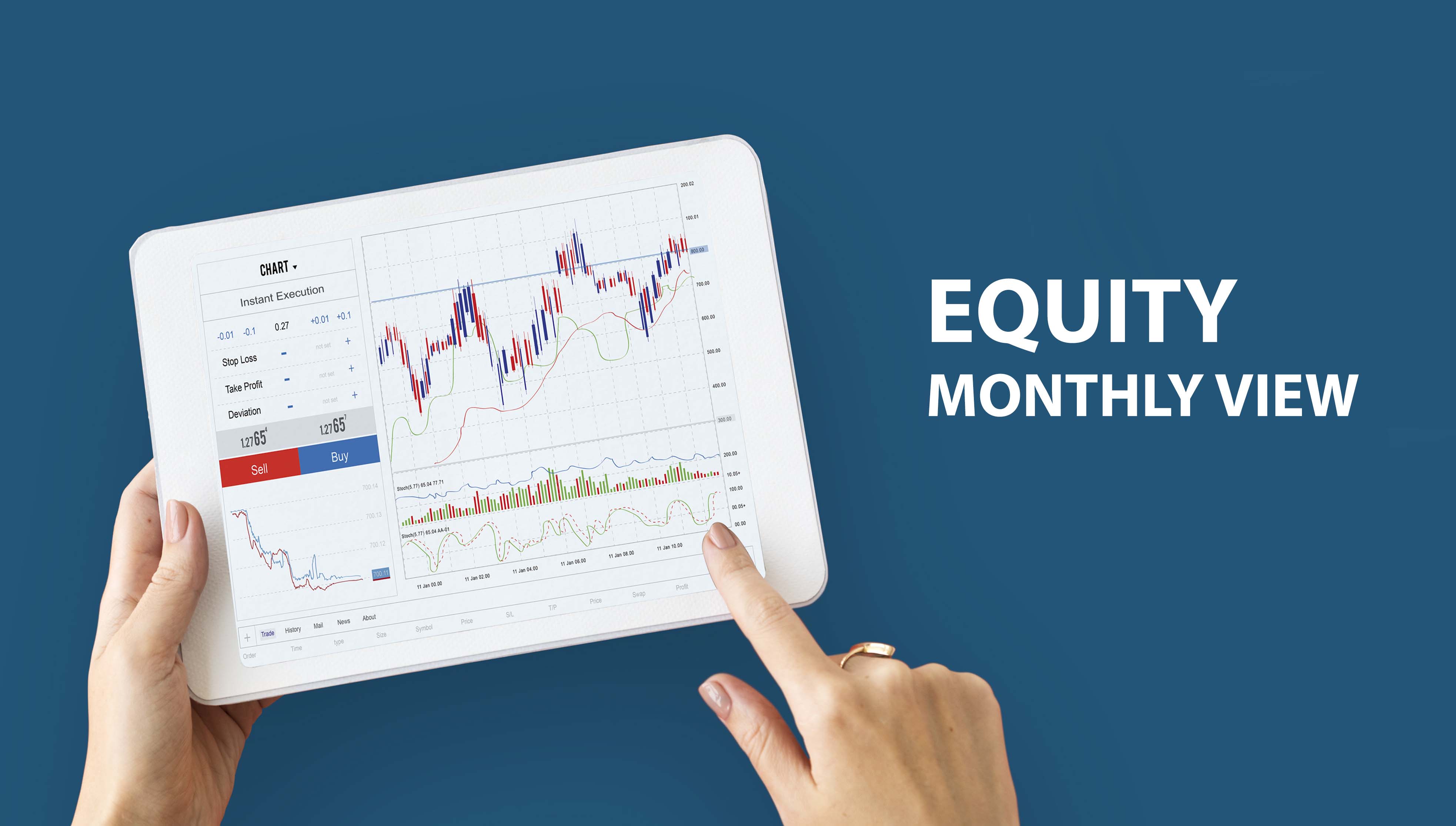Current valuations rich, but some upside still left
Posted On Friday, Mar 19, 2021
I V Subramaniam, popularly known as Subbu, manages around $2.8 billion worth of India-dedicated portfolios for international clients. While the managing director of Quantum Advisors is betting on a 6-6.5 per cent steady growth for India going forward, he believes the recovery needs to be broad-based. According to Subramaniam, a lot of money has flowed into the Indian equity market because of surplus liquidity across the globe. This inflow has more to do with sentiment than the intrinsic strength of the economy. So, a slightly negative perception about India can trigger an outflow of funds. In an interview with Vatsala Kamat, Subbu discusses how rising commodity rates can affect stock prices, whether a commodity super cycle can trigger private capex and how the central government is doing its bit to spur growth through infrastructure capex, the Aatmanirbhar package and the PLI scheme.
Q1: Crude and metal prices have been shooting through the roof. What impact will it have on equity markets?
A: Several forces have come together to drive up commodity prices. Huge fiscal stimulus by economies across the world led to a rebound in consumption and demand for goods. But supply did not keep pace with this, perhaps because many suppliers were unable to scale up production suddenly to cater to the increased demand. So, it was high demand and the inability of supply to match, which resulted in commodity prices going up.
To add to this, some broking houses and financial websites are forecasting a long, super cycle in commodities. This has attracted a whole set of investors into commodity trades, taking prices up.
Another reason is that there are some investors who believe that the stimulus given to revive economies could have an inflationary impact. In such a case, commodities would do well. Further, a weaker dollar made it more attractive for some economies to import commodities. So, global demand rose.
I think all these factors came together to influence commodity prices.
Q2: Do you think this would be a prolonged cycle? Has demand gone beyond pre-Covid levels to justify that the uptrend would sustain?
A: See, super cycles can remain for longer periods. But it does not mean we will see a unidirectional uptrend. There could always be volatility and increased supply in response to demand expansion. Remember that supply responds at a certain price. So, if you are a high-cost manufacturer, you may resume production now that prices are high, which in turn can cool prices. This is part and parcel of a cycle.
Q3: Will this commodity cycle drive private sector capital expenditure (capex) that has been in limbo for over a decade?
A: Well, higher supply need not mean there will be an immediate revival in capex. I think we still have enough capacities. But they will resume production at viable prices. Moreover, there are a lot of factors involved. For instance, companies may have factories at multiple locations functioning at varied levels of utilisation. Then there are issues of logistics and supply chains that will determine how they respond to demand.
In India, capacity utilisation levels are still not optimal to encourage capex. The latest data from the Centre for Monitoring Economy (CMIE) shows that new capex announcements are subdued. The capacity utilisation is at around 65 per cent. This means that nobody is in a hurry to incur capex and expand operations.
This is why the government is stepping in with infrastructure capex, with the hope that as the economy picks up speed capacity utilisation will increase, which would spur private sector capex cycle.
Looking back, I think slow capex cycle is a function of excess capacity created in the past. During the boom in India soon after the 2007-08 global financial crisis, a lot of companies expanded capacity rapidly. But demand did not pan out as expected for various reasons—downturn in demand, credit crisis, goods and services tax (GST), demonetisation and of course the pandemic. In my opinion, it will take some time for the widespread capex, which we saw in the late 2000s, to come back.
Q4: Is there enough steam in the Atmanirbhar policies or the PLI (Production-Linked Incentive) schemes to drive growth and capex in the country.
A I think the two policies have slightly different perspectives. Atmanirbhar Bharat aims at making the country self-reliant, while addressing immediate needs of the pandemic-led pain faced by companies. It offered incentives and concessional credit facilities to MSMEs, easier access to working capital and some direct fiscal incentives.
The PLI scheme provides incentives to companies to invest in building capacities of global size and scale. The aim is to make Indian companies an integral part of the global supply chain. It is early in the day to comment on the outcome as the details for each industry are still being worked out by the respective ministries. Also, broader modalities, such as the percentage of revenue that qualifies for incentives, eligibility if revenue falls after the first year, etc, are still being clarified. The focus of the scheme, which is mainly to incentivise exports and substitute imports, is positive. Of course, actual benefits depend on how it is implemented.
Q5: What kind of recovery do you expect given that another wave of the pandemic is rearing its head?
A: The CMIE has analysed close to 4,000 companies. It shows clearly that the larger companies did well in post-lockdown sales growth. But the smaller ones haven't yet fully recovered. For strong and sustainable economic growth, we need some of these smaller companies to do well too. Having said that, historically it is always the larger ones that benefit more in the initial phase of the recovery from a crisis. Marginal players get affected.
India has bounced back well as seen in the GDP growth numbers for the third quarter. But the GDP calculation assumes that the smaller and unorganised sector is growing at the same pace at which the organised sector is growing. My sense is that recovery is not likely to be very smooth from here on. We may see some hiccups. So, to answer your main question, whatever shape the recovery may take (V or K), it needs to be more broad-based for a sustainable growth from these levels. At this stage, one needs to be a little cautious on optimism.
Q6: Is there any shift in sectoral preferences since the post-Covid recovery, which has been followed by a run-up in valuations?
A: We are lookingat a long-term sustainable GDP growth. We believe that after the initial hiccups, India’s GDP will continue to grow at 6-6.5 per cent. Our view is that India is a consumption-driven story. There are so many product segmentsthat arestill under-penetrated. So, the growth rate will continue to be high. The government has also done its bit by incentivising growth.
Within this framework, we analyse all sectors and invest, based on valuations that look attractive to us. Value is critical to our investing approach. So, we don’t take any macro call on sectors. We cover all sectors, and wherever we find value, we invest. For instance, we have not held a single consumer staples stock for many years (be it Nestle, Unilever), because of valuations. So, we have no sectoral bias and we look at catalysts for the valuations to get unlocked.
Q7: You manage a sizeable corpus of global institutional investors. What is your view on the current valuation of Indian equities?
A: As I said, our clients, such as international pension funds, take a long-term view on India that stretches over decades. But they may alter their allocations to India, based on relative opportunities in other economies and markets. In this backdrop, if you look at the calendar year 2020, I think India received substantially higher amount of foreign portfolio investors’money. And the valuations for the India’s benchmark equity indices were very high compared to the rest of the emerging markets. But then sometimes the index is not a true reflection of what is on the plate.
At this point, for instance, we say that the valuations may be rich compared to last year. But, it is still not at a level where we need to sell our portfolio. There is still some upside because the recovery in the economy will be reflected in the earnings trajectory of companies.
Of course, I am referring to the large-cap companies (top 200) because our focus is on highly liquid companies.
Q8: Is there a change in investor perception about the Indian economy after the pandemic, especially with respect to China or some other Asian economies?
A: PostCovid, a lot of money has come into India partly because of the huge amount of liquidity available everywhere. All of this may not be based on the fact that India is attractive. It could be due to some sort of allocation out of their emerging markets or from the global pool of investible funds.
Or, for instance, if the India weightage in the MSCI goes up, they may increase allocation to India. Such fund flows were huge last year.
But Bloomberg data shows that there was redemption in the active India funds. What we see therefore is more passive allocation of funds. This could be a problem because if there is even a slight disappointment with India, the money may go out and it will affect stock prices. However, this has nothing to do with the economy. It is more a sentiment like we saw in 2008, when there was the global financial crisis and the housing boom in the US suddenly collapsed. The Indian economy was not directly affected but globally the sentiment turned negative.
During such times when there is a big sell-off, it is important to assess if the economy is going to be hurt. I am not so concerned about stock prices being hurt, as they will recover if economy is doing well.
Q9: Where do you see value at present in Indian markets?
A: Right now, we are overweight on financials, consumer discretionary and utilities. We are Overweight in IT last year, but we began to trim the allocation by the end of the year, when we felt that valuations became rich. We are under weight in consumer staples.
Q10: Which sector could lead to sustained growth of the Indian economy? What are the risks to economic growth at this point that could also have an impact on equity market valuations?
A: It depends on how you are viewing the economy and earnings. We see decent earnings growth potential even from the current levels. Valuations beyond the Sensex stocks are largely in the mid-point. So, we are invested and have not trimmed or sold our stock exposure.
I think this time around sustained economic growth would be driven by the housing sector. Low interest rates, reduction in stamp duty, incentives to affordable housing and prolonged stagnation in property prices should have a positive impact on the sector. This will have a multiplier effect on other sectors too.
However, rising Covid cases could be a risk as they may trigger sporadic lockdowns. This could impact fiscal deficit and trigger inflationary pressures. Beyond a point, companies may find it difficult to pass on rising costs to end-users. Then, profitability would take a hit. Higher fiscal deficit will lead to rupee depreciation.
A slightly longer term and serious risk is unemployment. The CMIE data shows that job losses are still continuing. If the situation does not improve, it will have an impact on consumption.
In our case specifically, when we are overweight on banking, any aberration in the bad loan provisions made over the next two quarters may be a risk to the sectoral valuation.
Q11: So, you are optimistic on continued foreign portfolio flows into India?
A: We have a strong view that interest rates across the globe make India very attractive for investors outside. However, while India has attracted a lot of equity money, the flows on the bond side is very low. There are many reasons such as India not being present in the global bond indices. If this is addressed, India can attract a lot of bond money, which can be channelized as long-term funds into the economy. While whatever is happening now in the housing sector is good, such measures can help keep interest rates low and help to sustain the housing boom and lead to sustainedconsumption demand.
Q12: What are your earnings growth estimate for the next two years?
A: Over the next two years the consensus earnings for Sensex is expected to grow at 25.4% CAGR ( FY21-23E). While the earning growth is expected to be broad based, financials within Sensex are expected to see a better earnings CAGR at 63% as the base year earnings (FY21) is suppressed due to higher Covid-19 related provisions on expectations of elevated credit costs. As the economy recovers, the actual credit cost over the next two years is expected to be lower, resulting in lower provisions and better earnings growth. Overall the bulk of earnings growth for Sensex is coming cyclicals like industrials & consumer discretionary besides financials.
The article has been published in www.moneycontrol.com
Disclaimer, Statutory Details & Risk Factors:
The views expressed here in this article / video are for general information and reading purpose only and do not constitute any guidelines and recommendations on any course of action to be followed by the reader. Quantum AMC / Quantum Mutual Fund is not guaranteeing / offering / communicating any indicative yield on investments made in the scheme(s). The views are not meant to serve as a professional guide / investment advice / intended to be an offer or solicitation for the purchase or sale of any financial product or instrument or mutual fund units for the reader. The article has been prepared on the basis of publicly available information, internally developed data and other sources believed to be reliable. Whilst no action has been solicited based upon the information provided herein, due care has been taken to ensure that the facts are accurate and views given are fair and reasonable as on date. Readers of this article should rely on information/data arising out of their own investigations and advised to seek independent professional advice and arrive at an informed decision before making any investments.
Mutual fund investments are subject to market risks read all scheme related documents carefully.
Please visit – www.QuantumAMC.com to read scheme specific risk factors. Investors in the Scheme(s) are not being offered a guaranteed or assured rate of return and there can be no assurance that the schemes objective will be achieved and the NAV of the scheme(s) may go up and down depending upon the factors and forces affecting securities market. Investment in mutual fund units involves investment risk such as trading volumes, settlement risk, liquidity risk, default risk including possible loss of capital. Past performance of the sponsor / AMC / Mutual Fund does not indicate the future performance of the Scheme(s). Statutory Details: Quantum Mutual Fund (the Fund) has been constituted as a Trust under the Indian Trusts Act, 1882. Sponsor: Quantum Advisors Private Limited. (liability of Sponsor limited to Rs. 1,00,000/-) Trustee: Quantum Trustee Company Private Limited. Investment Manager: Quantum Asset Management Company Private Limited. The Sponsor, Trustee and Investment Manager are incorporated under the Companies Act, 1956.
Related Posts
-

The Monetary Transition
Posted On Wednesday, Nov 24, 2021
Inflation has been one of the biggest talking points globally in 2021.
Read More -

सौरभ गुप्ता द्वारा मन्थ्ली इक्विटी देखें
Posted On Friday, Sep 17, 2021
एसएंडपी बीएसई सेंसेक्स अगस्त-21 के महीने में कुल रिटर्न के आधार पर 9.4% बढ़ा।
Read More -

निश्चित आय मासिक कमेंट्री - सितंबर 2021
Posted On Friday, Sep 17, 2021
बॉन्ड मार्केट के लिए अगस्त एक सकारात्मक महीना था। मैच्योरिटी कर्व के दौरान बांड यील्ड नीचे आया।
Read More



